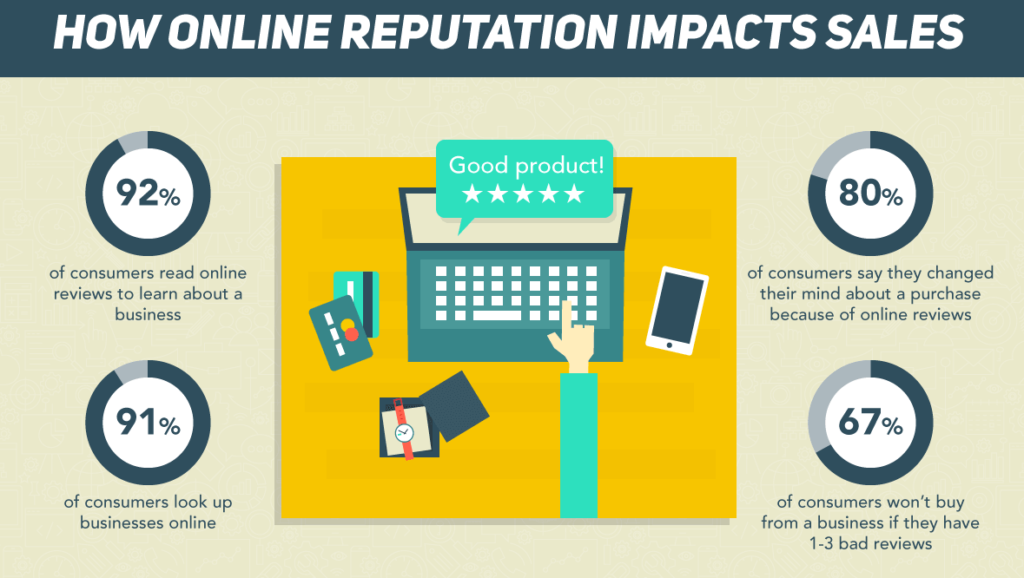The Complete Guide To Online Reputation Management For SaaS (2023)
You’ll have a hard time finding customers for your SaaS product if you have a negative, or even mixed, online reputation.
It doesn’t matter if your negative reputation is a true reflection of your product’s performance or a result of a smear campaign.
It will have dire consequences for your business.
And this is why you need to invest in online reputation management (ORM).
In this detailed guide, I’ll tell you how to build a proactive reputation management strategy that directly contributes to your product’s growth and long-term success.
For the TL;DR crowd, here’s a break down of what will be covered so you can jump right in to specific points:
1. Evaluate Your Brand’s Online Reputation
2. Address Inaccurate High-Ranking Content About Your Brand
3. Get Featured On The Top Industry Blogs To Build Credibility
4. Dominate SERPs With Link-Worthy Long-Form Content
5. Optimize For ‘Alternatives’ And ‘Best Of’ Keywords
6. Invest In Link Building To Push Down Negative Content
7. Launch On Product Hunt To Get A Reputation Boost
8. Monitor Brand Mentions To Protect Your Reputation
9. Grow Your Tribe To Generate Word Of Mouth
10. Feature Customer Success Stories And Testimonials
11. Interview Niche Influencers To Reach A Wider Audience
Keep reading.
What Is Online Reputation Management (ORM)
Online Reputation Management (ORM) is a coordinated strategy to develop a positive perception of a brand, individual, or group on the internet.
Its primary goal is to ensure that your prospects and broader target audience see positive articles, reviews, and content about your brand when they search for it on Google (and other search engines).
Its other key objective is to monitor your brand mentions and counter any negative content showing up in search results or social media.
Here are a few stats to help you understand the impact of your brand’s online reputation on sales.
How does a reputation management strategy protect your image online?
- By proactively securing your brand name and ensuring that positive content shows up in search and social media when users search for your brand or product.
- By pushing down, countering, or removing negative content from Google’s first page and any other prominent niche-specific forums.
There’s a lot more detail to these two points that I’ll discuss later in the article.
Online Reputation Management Is Not A Scam
This is important to remember.
Online reputation management is not about making a bad product look good.
It’s about proactively building a positive brand image, countering negative propaganda against your brand, and ensuring that a rare bad customer experience or an occasional technical glitch is not used to defame your product.
But if there’s a serious problem with your product or service, you need to sort it out before investing in an ORM strategy.
Why Is Online Reputation Management Important For SaaS?
The SaaS product space is more competitive than ever before.
And online product reviews, star ratings, and customer recommendations are playing a decisive role in SaaS lead generation and sales.
A study in 2020 by BrightEdge shows that 68% of all online experiences start with a search engine.

Imagine if a potential customer searches for your product on Google and the first result says “It’s a scam, don’t fall for it” or “It keeps crashing and their support sucks”.
Not the best first impression, right?
Unfortunately, 65% of people will believe it, according to the 2020 Eldmen Trust Barometer report, even if it’s not true.
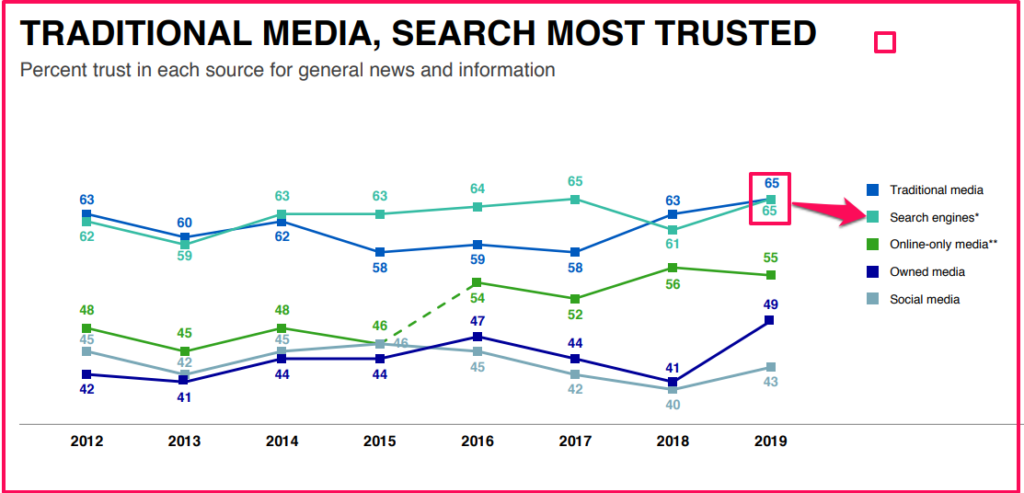
Before something like that happens, you need to create positive content that shows up when someone searches for your brand or product.
That’s online reputation management.
Without it, you’re always one negative review, article, or social media post away from disaster.
But SaaS ORM is not limited to search engines and social media only.
You must also keep an eye on review sites like Capterra, G2, and others that dominate most of the high-traffic SaaS search keywords and are visited by thousands of people every month.
Anything less than an average 4-star rating on these platforms means 52% of people won’t even consider using your product.
Sounds too much to handle?
Let me break it down into actionable steps.
11 Steps To Building A Flawless Online Reputation
Every business has unique needs so there’s no one-size-fits-all ORM strategy. But the following reputation management tactics work for most SaaS businesses (with a little customization).
1. Evaluate Your Brand’s Online Reputation
Start by running a reputation audit to see where you currently stand.
What do people see on Google’s first page when they search for your brand name?
Ideally, it should be your website and your social media profiles like LinkedIn, Twitter, Facebook, YouTube, etc.
For example, here are the first-page result for our brand name “inbound junction”

Our website, LinkedIn page, my Linkedin profile, and a couple of positive reviews from other sites.
Perfect.
Let’s search for Buffer, a popular social media app.

Again, their website, Twitter account, LinkedIn page, and a few other positive results.
You might be thinking, “Why would Google show any other company for my brand name?”
There can be a few reasons.
- You haven’t created optimized brand assets that Google can show for your brand name.
- You haven’t linked your off-site assets well enough with your brand name.
- Your site is new and doesn’t have enough backlinks.
- Your site and social media profiles have little or no content.
The best way to avoid this situation is to optimize your website for your brand name along with your primary target keywords.
Plus, secure your brand name on all the top social networks, keep them active, and add their links to your website footer to show Google and your audience that they’re your official accounts.
This should take care of the top 6-7 spots in SERPs.
It’s great if the remaining spots have positive or neutral reviews about your brand.
But what if they’re negative or misleading?
Keep reading for the solution.
2. Address Inaccurate High-Ranking Content About Your Brand
There are two types of high-ranking negative content you need to worry about.
- Negative content in the top ten search results for your brand name.
- Negative reviews, articles, forum posts, guides, etc. on other high-ranking keywords in your niche.
You need to get rid of both types of content because they’ll directly hurt your sales.
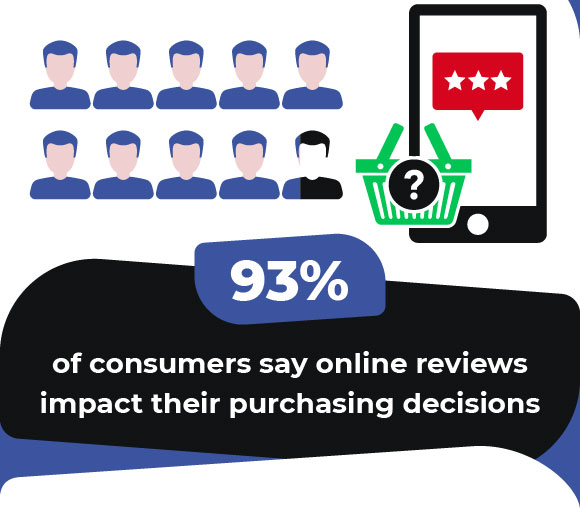
How to handle such content?
For the first page results, I suggest getting in touch with the website owners to see if you can work out something. If it’s a negative review, try sharing your side of the story and answer their objections so that they can rephrase the content to make it look more neutral or even positive.
Again, I’m assuming that the negative content is a misrepresentation of your brand.
But if it highlights a genuine problem with your product or service, sort it out before trying to get rid of the negative result.
Handle high traffic negative content on other keywords in the same way.
For example, here’s a pretty negative review of ClickFunnels which gets around 1K visitors per month from Google Search.

If you see something like this for your brand, you have to reach out to the reviewer, understand their concerns, offer a solution, and try to get rid of it as soon as possible.
But let’s say a polite inquiry doesn’t work and the writer refuses to remove the negative content.
This is when you need to push the negative content down by pulling up positive coverage of your brand.
How?
- Find the positive reviews of your brand by third party sites.
- Identify 10-15 high-authority sites in your niche that accept guest posts.
- Alternatively, get in touch with the regular authors of those sites.
- Write guest posts (or ask the authors to do it) for your target sites.
- In every guest post, frame your product positively and link to the positive reviews of the site you identified in the first step.
- Also link to the positive reviews from your brand’s site/blog and any other online properties you own.
This would gradually elevate the positive reviews in search results until they replace the negative ones.
3. Get Featured On The Top Industry Blogs To Build Credibility
Getting coverage for your brand in the top publications in your niche is a huge credibility booster.
Particularly for new brands that don’t have big-name customers to show off.
If your site’s “Featured In” section has logos of TechCrunch, Entrepreneur, Forbes, TheNextWeb, Fast Company, and other leading tech publications, people will trust you faster.
It’s a popular form of social proof that freelancers, agencies, startups, and all kinds of businesses use.
This is completely different from guest blogging for backlinks only.
The goal here is to get your brand in front of the millions of visitors and subscribers of the top sites in your niche. This can be in the form of a regular guest post, an interview of your founders, a tutorial, or a review of your product.
Any post on these sites will likely rank in the top ten search results which is an added bonus of getting featured in them.
However, the biggest challenge in getting coverage from high-traffic sites is the volume of pitches and outreach emails they receive every day.
It’s very hard to get a favorable response from them unless you’ve previously written for them or have connections with the editorial staff.
For anyone doing this for the first time, it can take hundreds of email pitches and connection requests before you get in.
The smarter approach is to hire professional help from agencies and people with the right connections in your target publications.
This is one of the reasons why top marketers like Matthew Barby and startup owners like Francois Bondiguel come to InboundJunction for guest blogging and outreach campaigns.
4. Dominate SERPs With Link-Worthy Long-Form Content
Content marketing is the foundation of an effective online reputation management strategy.
By creating high-quality content that answers the questions of your audience and solves their biggest problems, you can achieve the following reputation management goals:
- Establish your brand as the go-to source for everything in your niche
- Rank for more high-traffic informational keywords
- Increase your chances of getting backlinks and citations from high-authority sites
Plus, it has a direct impact on your brand’s perception.
This is why most startup marketers consider content marketing very important for their overall marketing strategy.

But thin, vague, and low-quality content won’t cut it.
To position your brand as a niche leader, you need to create in-depth and actionable content that answers the questions of your audience more comprehensively than your competitors.
Instead of barely scratching the surface of a topic, create content that shares step-by-step guidelines, and shows your readers exactly how to achieve their goals.
How can you find the biggest pain points of your audience?
By performing detailed keyword research.
But that’s a separate topic that I’ll cover in a different post.
Right now I’ll give you a couple of simple free methods to find the questions your audience is asking.
People Also Ask & People Also Search For
Google Search shows a “People also ask” section for most search keywords.
It lists the most common questions people are asking about a topic.
For example, here are the questions Google is showing for the keyword “invoicing”

When you click on a question, more related questions pop up.
Moreover, if you click on a search result and then bounce back to the SERPs page in a few seconds, Google will show you the People Also Search For section.
These are the answers your audience is looking for. Cover them in your content and you can rank for relevant high-traffic search keywords.
Google Search Autocomplete
Go to Google Search, type your main topic keyword, and add an asterisk at the end (don’t press ENTER) to see a list of high traffic queries related to your topic.
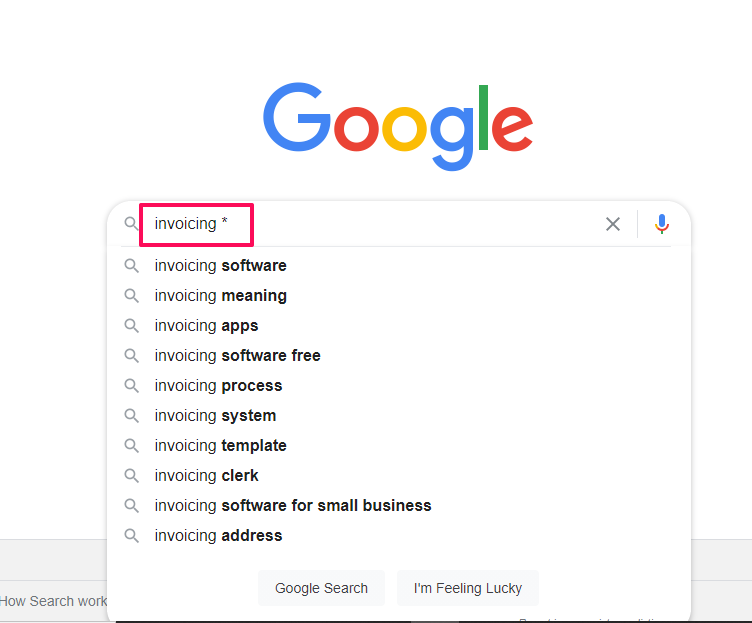
Now move the asterisk before the keyword.
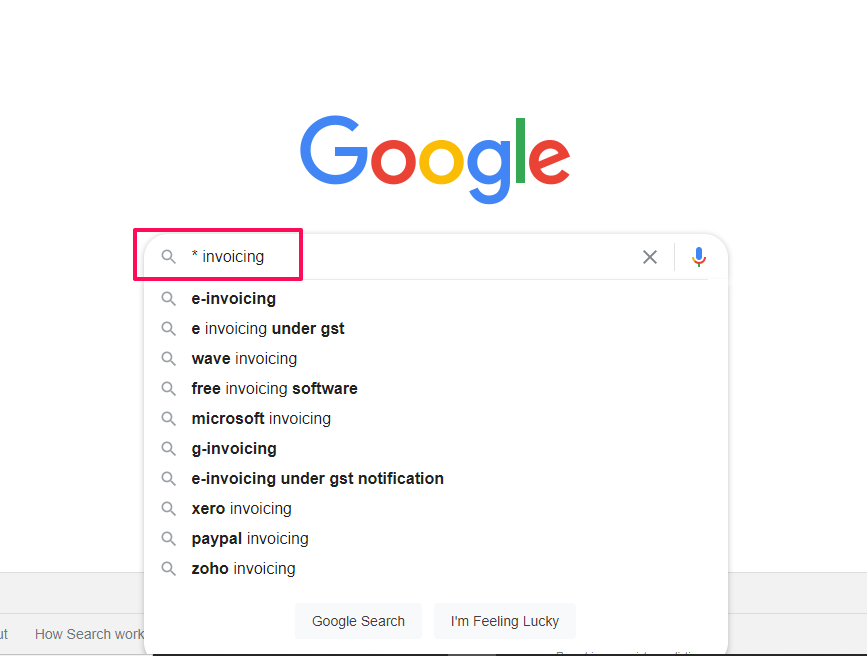
Want more ideas?
Add “for” after your keyword.
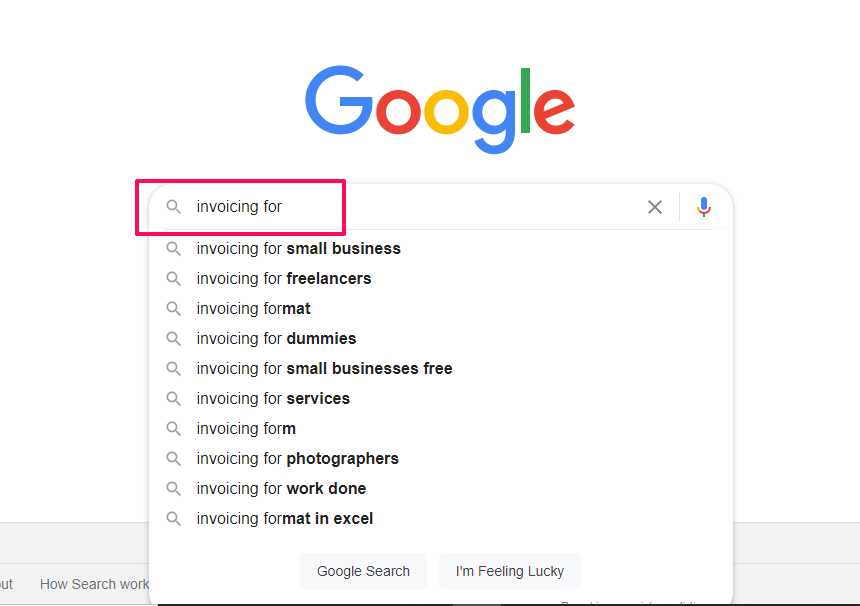
Keep experimenting with different keywords to unveil new ideas.
You’ll need to dig further using a premium tool like Ahrefs or SEMrush to come up with a finalized keyword list you should target.
But these keywords provide a great starting point.
The more high-quality content you can create for your target keywords, the better for your brand’s reputation, lead generation, and overall business growth.
5. Optimize For ‘Alternatives’ And ‘Best Of’ Keywords
Speaking of keywords there are a few keyword types that SaaS businesses need to take advantage of.
Let me briefly describe them.
Alternatives
Your startup might be new but your competitors aren’t.
And people are looking for their alternatives all the time.
Why not publish a page that lists the alternatives of your most popular competitors?
For example, a new project management app can target keywords like “monday alternatives” or “ClickUp alternatives”

According to SEMrush, this keyword has a monthly search volume of 2.4K which isn’t a lot but not bad either since these searches indicate high purchase intent. And it’s much easier to rank for it as compared to keywords like “project management software” or “project management app”.
So whatever niche you’re in, publish an alternatives post that features your product at the top followed by your competitors.
Such content is also great for your reputation building because it puts you in the same category as the leading companies in your niche.
Comparison (Vs.)
Like alternatives, comparison searches are also quite popular in the SaaS space.
For instance, in the project management space, you’ll find high traffic keywords like “Trello vs. Jira” or “Monday vs Asana”
Why not make it “Monday vs Asana vs [Your Brand]”?
To find comparison keywords, just Google your top competitors like this.

Evaluate the search volume and difficulty of these keywords in Ahrefs or SEMrush before targeting them in your content strategy.
Best Of Keywords
Another popular SaaS search query is “Best+[Your Niche]+Software+[Current Year]”
If you search for this query in any SaaS niche, the results will show blog posts instead of the website homepages of the top software in that niche.
Let’s try this for email marketing
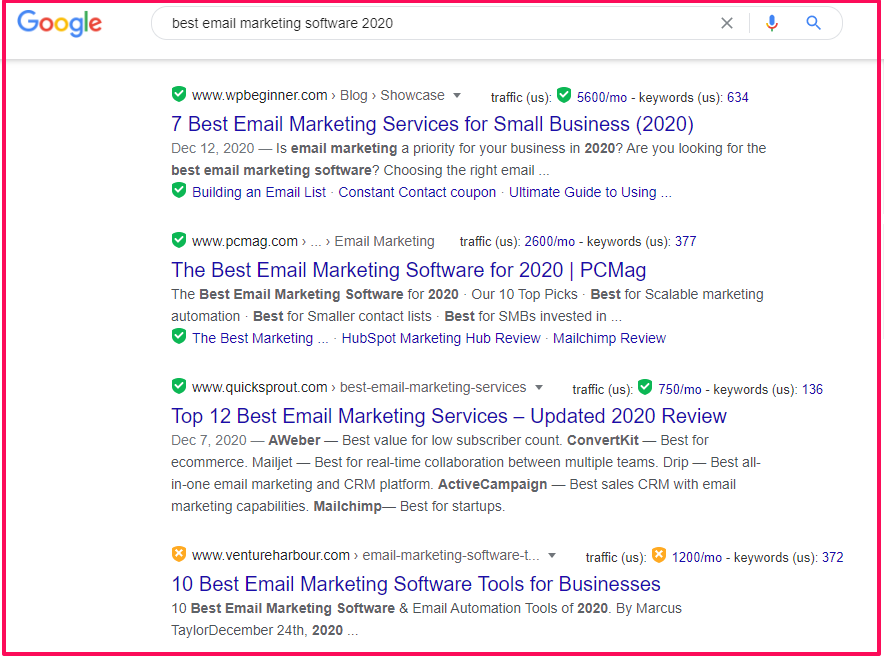
As I said, all blog posts.
Such keywords are often competitive, but they also offer you an opportunity to drive traffic to your site and position your brand alongside the other top software in your niche.
Try it; publish an in-depth article that lists the best software in your niche (putting you at the top of course).
To rank for these comparative posts you’ll need to have a ‘strong’ site with a high authority score. If your company’s website is relatively new, it would be advisable to go the content marketing-route and try to get these kind of posts on third-party website with higher authrity.
6. Invest In Link Building To Push Down Negative Content
I’ve shown you how content marketing will help you generate more leads.
But to get your content to the top of the SERPs for your target keywords, you’ll need backlinks.
According to research by SEMrush, there’s a direct relationship between a site’s search rankings and the number of unique backlinks pointing to it.

But no high-authority site would link to your content (no matter how great your outreach emails are) if your content is useless.
This is why the first step of link building is to create link-worthy content on your site.
To create link-worthy content, you first need to understand why websites link to outside content.
According to research, there are six main reasons.

Keeping these reasons in mind, here are the main characteristics your content needs to have to become link-worthy
Detailed And In-Depth
I’ve already mentioned why in-depth content is important for brand building. But it’s equally important to get backlinks.
According to a study by Hubspot, out of all their content (thousands of articles), the ones longer than 2500 words got the most backlinks.

So whatever topic you’re writing about, cover it comprehensively and aim for at least 2500-3000 words.
Backed By Data Evidence
Original studies, survey findings, or any other content that’s backed by solid data evidence gets backlinks easily.
As you can see, 70% of marketers consider data as the most efficient content type for link building.
Visually Appealing
If you don’t have original data or studies to share, try converting secondary data into infographics and images for your content.
According to a survey by Moz, content with lots of visuals gets backlinks easily because other sites use their images with a backlink to the original source (like I’ve done in this article).
People love linking to case studies and examples because they provide proof of concept. Whenever you make a claim or share a theory in your content, try backing it up with an example.
Once you have link-worthy content on your site, it’s much easier to get backlinks by reaching out to the top sites in your niche. Sometimes, even that’s not needed because people link to you voluntarily just because your content is so useful.
But you can’t rely on passive link building only. This is why having connections with the authors in your target publications is so important. Link building becomes much easier and scalable when you’re well connected.
What’s the ultimate benefit of authority backlinks?
Your content will move up in the search rankings for your target keywords and push down any negative content that might be ranking for it.
7. Launch On Product Hunt To Get A Reputation Boost
Product Hunt is a popular curation platform for SaaS products. Some of the best SaaS marketers actively use it to share their feedback on different products.
This is why it’s also a great place to network and build new connections with influencers.
If you can pull off a successful launch on Product Hunt, you can gain an instant reputation boost and exposure for your brand.
Here’s how it works.
You share your prototype or the live product URL on Product Hunt and share as many details about its utility and target audience as possible.
Product Hunt shows it to relevant users on its platforms who can Upvote or Downvote the product and comment on its features as well.
The more Upvotes and buzz you can create around your product the better for your reputation and brand awareness.
For example, here’s a top trending product on Product Hunt that received over a thousand Upvotes.

Sounds easy, right?
Not really.
Product Hunt launches need to be carefully planned to generate the most buzz around your product. Otherwise, with so many other products on the platform, it’s difficult to stand out.
8. Monitor Brand Mentions To Protect Your Reputation
While you’re dealing with negative search results and creating a content marketing strategy, don’t forget to monitor new brand mentions.
Reputation management is an ongoing process so you need to be aware of any new brand mentions right away. If they’re positive, share them with your followers.
But if they’re negative, deal with them using the relevant strategies I’ve discussed above.
How do you monitor brand mentions?
Start by setting up Google Alerts for your brand name and any of its variations.

In the screenshot above, I’ve set up an alert for the keyword “Slack”. Whenever Google indexes new content that includes this word, I’ll get an email alert for it.
That’s an easy way to monitor your brand online.
For social media monitoring, you’ll either need to run periodical searches on the top social networks or use premium social listening tools like SentiOne, NetReuptation, Brand24, etc.

I’ve discussed this in much more detail in this brand monitoring guide.
9. Grow Your Tribe To Generate Word Of Mouth
Enhancing your brand’s reputation and defending it against negative propaganda becomes much easier when your customers become your brand advocates.
Turning them into such loyal followers takes time, but it often starts with building a community around your brand.
To be more specific, I’m talking about growing an email list and a closed Facebook group for your product users.
The idea is to keep your customers and followers engaged all the time with valuable content and two-way communication which makes them feel heard.
Both these strategies demand time but they’re pivotal in building a strong relationship with your customers and ultimately turning them into passionate followers who’re ready to defend your brand against any negative campaigns.
10. Feature Customer Success Stories And Testimonials
If you have premium customers who’re actively using your product, try finding out its impact on their business.
Are they growing because of your product? How has your product made their lives easier? Would they now feel handicapped without your product?
There are often customer success stories and case studies hidden in such conversations.
You can use them as social proof on your website, and as a part of your marketing and sales material.
And it doesn’t even have to be a thousand-word case study.
Sometimes a to-the-point testimonial that mentions exactly how your product benefitted a customer is enough to make an impact on your website visitors.
Like this testimonial by Matthew Barby, Director of Acquisition at HubSpot, we’ve featured on our site’s homepage.

You can promote these quotes testimonials, and case studies by mentioning them in your guest posts, blog content, social media posts, email campaigns, and any other platforms where you’re looking to make an impact on your target audience.
11. Interview Niche Influencers To Reach A Wider Audience
The opposite strategy to guest blogging is to host popular niche influencers on your site through podcast interviews or written contributions.
For example, Shopify has a podcast series called “Resilient Retail” which features successful entrepreneurs (mostly from the retail sector) who were able to overcome odds to build successful businesses.
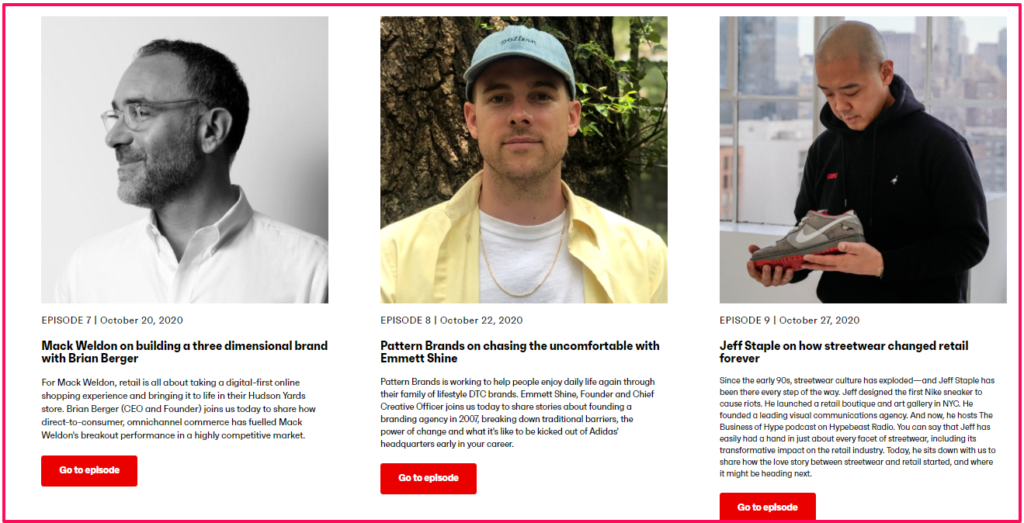
Basecamp also has a popular podcast called The Distance that features lessons from businesses that have been running for more than 25 years.
You can apply this strategy to your industry by inviting relevant influencers to a podcast or written interviews.
Whoever agrees to participate will also share it with their followers. Plus, their goodwill will also make a positive impact on your brand’s reputation.
Are You Ready To Invest In Online Reputation Management?
I’ve given you a glimpse of what an online reputation management strategy looks like.
There’s a lot more that I couldn’t discuss because this article would’ve gone on for thousands of more words.
But here’s the bottom line.
Proactively building a positive perception and safeguarding your brand against negative reputation attacks is an ongoing process.
But once you build your initial brand assets, develop a certain level of authority in search engines, and grow a loyal social media following, day to day reputation management becomes much easier.
If you want more customized advice for your brand, just shoot us an email and we’ll take it forward from there.

